Italy vs France: Which Travel Destination is Right For You?
February 27, 2020
Eating cheese and drinking wine by the Seine or strolling through the summertime lavender fields of Provence, sipping espresso beneath the shade of the famous Duomo in Florence or gliding through the canals of Venice — it’s hard to think of two countries which boast more iconic imagery or ignite more colorful travel daydreams than France and Italy.
In an ideal world, we’d never have to choose between the two, but time (and budgets) often demand otherwise. If you’re not sure which of these two beautiful, historic, and foodie-friendly countries to visit on your next trip, here’s a few things to consider when making your final decision.
Landscape & Weather
- Italy is warmer overall than France on average
- Both have mountainous regions that get very cold in winter

Although they’re relatively close to one another geographically speaking — and thus do share some similarities — there are some noteworthy differences between France and Italy when it comes to landscape and weather.
France
France is over twice the size of Italy, and because it is farther north is generally cooler overall. However, France has three main “climate regions”: the oceanic region in the flat plains and hills of the west/northwest, the continental region in the northeast, and the Mediterranean region in the more mountainous south/southeast.
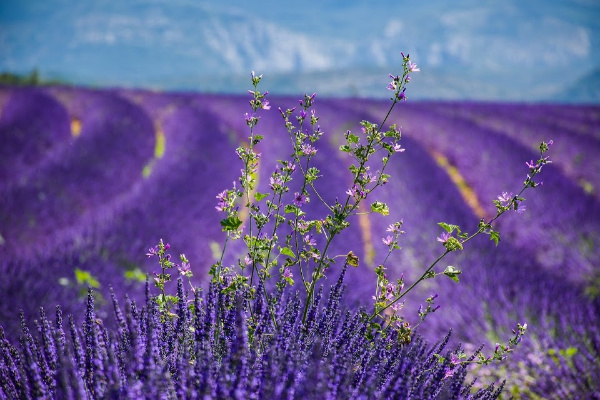
The oceanic region — which includes cities such as Paris and Bordeaux — is most temperate year round, with higher levels of overall humidity but moderate rainfall. The continental region, which encompasses Strasbourg and Lyon, features a much greater temperature range throughout the year, with warm, rainy summers and clear, cold winters.
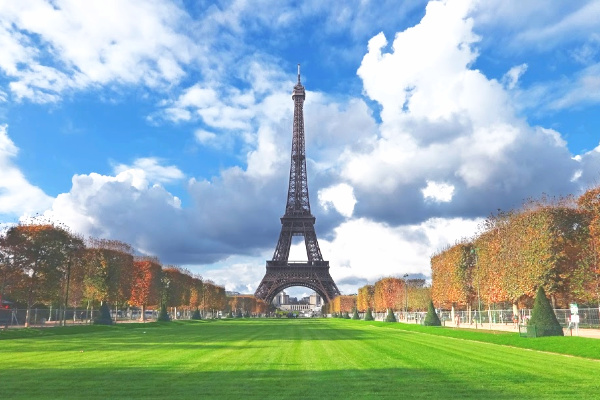
Finally, the Mediterranean region — where Nice, Marseille, and the region of Provence are located — features mild winters, heavier rain in the spring and autumn, and hot, dry summers. Because of its geographic proximity, this climate region of France is most similar to Italy.
Finally, France features some impressive mountain landscapes, including the Pyrenees, which form a natural border with Spain in the southwest, and the Alps, which form a natural border with Italy in the southeast.

Mont Blanc, topping out at 15,771 feet as the highest point of the European Alps, can be found within French borders. These mountain regions generally boast cold, snowy winters and sunny, hot summers.
See France Hiking & Walking tours
Italy
Overall, Italy is warmer and drier than France due to its more southerly location. It also has a vastly greater amount of coastline — surrounded on nearly all sides by the Mediterranean, Tyrrhenian, Ionian, and Adriatic Seas — and is much more hilly and mountainous than France, resulting in much greater climate variation from place to place despite its smaller size.
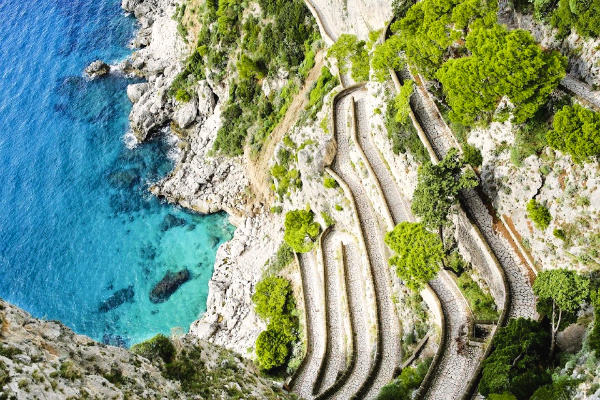
The Alps characterize the northern region of Italy, which overall has lower temperatures and higher levels of precipitation than the rest of the country (including plenty of snow in the winters). The famous Italian Dolomites, part of the larger Alps, can be found in the northeast, and other well-known locations such as Milan, Lake Como, and Lake Garda can also be found in this northern region.
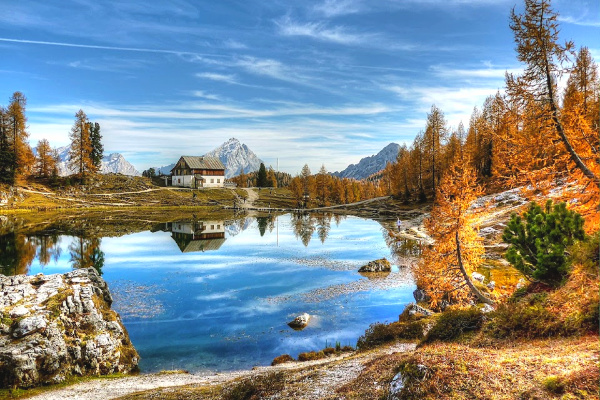
In its more inland and mountainous regions (such as the Apennine mountain range, which runs the length of the country and forms the “spine” of the peninsula), Italy’s climate is slightly milder and wetter than its coasts, though still quite hot in the summers.
Florence, the most well-known city in Italy’s Tuscan region, is a good example of this type of climate. Italy’s coastlines and southern regions feature the classic Mediterranean climate, with hot, dry summers and mild winters.
How well do you know the world?
Play the gameContinues below
...continued
Cuisine
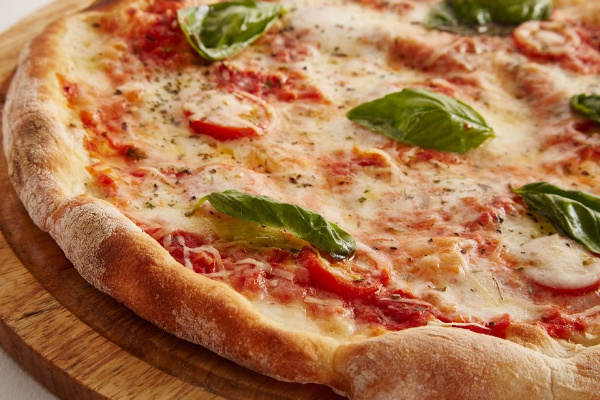
Both France and Italy are renowned for their cuisine — and their wine. Determining which country has the “best” cuisine is an impossible task, and to make matters more complicated both countries also boast incredibly diverse regional food traditions.
However, there are some main features and key differences between the two nations to keep in mind when deciding where you’d like to travel (and what you want to eat).
France
- A wide variety, from casual countryside fare to "haute cuisine"
- Expect fresh ingredients and lots of seasoning
- Vegetarians won't have too much trouble in France, but Vegans will notice a lot of cheese and bread
- Soups and sauces are popular
- Famous wine regions in France: Rhone, Burgundy, Bordeaux

In general, typical French cuisine relies heavily on lentils, potatoes, fresh greens, meat, fish, and bread, and typical seasonings include thyme, parsley, rosemary, tarragon, and black pepper.
Each region in France has its own unique traditional foods, some of which have become well- known and oft-recreated worldwide — for example, the seafood soup bouillabaisse from Marseille, or andouillette sausage from Lyon.
These regional differences are also apparent in the diversity and high quality of French cheese, for which the country is also known: there are over 300 identified varieties of cheese in France, hailing from all corners of the country.
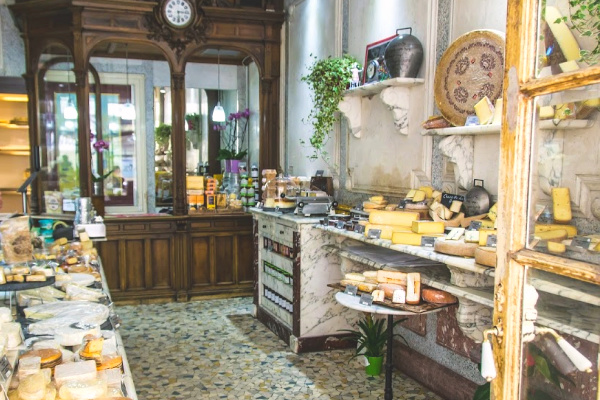
These cheeses are mostly made from cow’s milk — such as Camembert from Normandy, or Brie from Ile-de-France — though some are also made from sheep or goat milk.
Bread and wine also feature heavily in the French diet. French breads (including the baguette, croissant, and a round bread similar to sourdough called pain de campagne, or “country bread”), are staples, and some of the world’s most famous wines hail from the regions of Bordeaux, Burgundy, and the Rhone Valley.
Finally, no discussion of French cuisine is complete without a mention of the culinary style known as “grande cuisine” or “haute cuisine” — the refined, elegant style of cooking that France is perhaps best known for internationally.

Beginning in the 16th century, this style of cooking has grown to be a highly exacting and professional art form which values rich, nuanced flavors and balanced, artful presentation. While this culinary style can be incredibly lavish and formal, modern French cooking often combines the best of this style with traditional foods from throughout the country.
See France Culinary & Wine tours
Italy
- Heavy regional focus
- Mediterranean flavors
- Simple ingrediants, elevated
- Famous wine regions in Italy: Tuscany, Piedmont
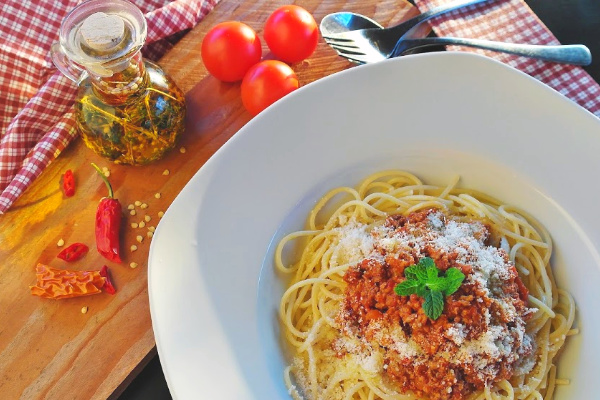
Food is an incredibly important part of daily Italian life, and cuisine in Italy is highly regionalized, based on the local geography, history, and way of life. Certain foods are even named after the region they hail from — for example Parmigiano Reggiano cheese (or parmesan cheese, as it is usually known as internationally) is associated with Italy’s Parma-Reggio region.
However, like in France, there are some uniting qualities of Italian cuisine. Typical flavour profiles include olive oil, tomato, basic, garlic, thyme, and rosemary, and meals rely heavily on elements such as pasta, rice, meat (including dry-cured meats, like Prosciutto), and fish.
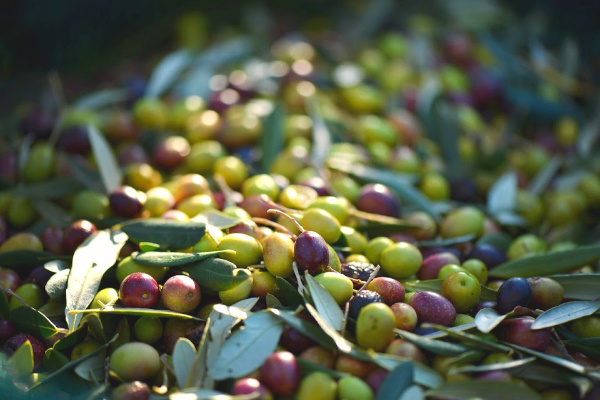
Northern Italian cuisine features more cream, butter, cheese, rice, and polenta — think rich risottos and creamy pasta sauces. In central Italy, heavier meat dishes are popular, such as wild boar in the regions of Tuscany and Umbria.
In the south, typical Italian cooking usually employs plenty of olive oil, tomato, citrus, and fish; Southern Italy is also known for its olive groves and vineyards. Like France, Italy is also world-renowned for its wines, which come from all corners of the country.

Continues below
...continued
Budget & Prices
- France is slightly more expensive than Italy overall
- Avoid the major tourist cities if you're traveling on a budget
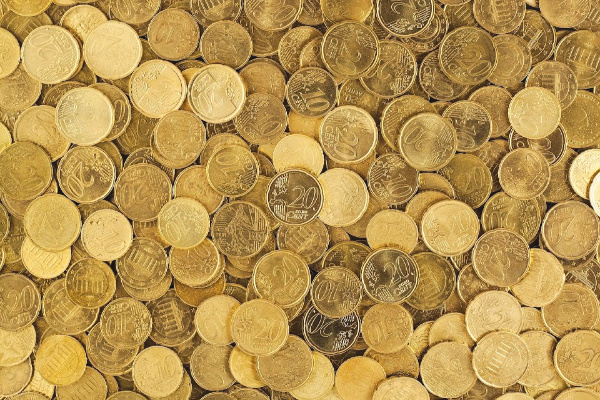
Finally, budget is an important consideration when deciding where (and how long) to travel.
Here’s a quick breakdown of the range of prices and expenses you can expect to encounter in Italy and France:
Overall, France is slightly more expensive than Italy — so for travelers on a tighter budget, Italy might be a more comfortable choice. With that said, the average price differences between the two countries isn’t vast, and there’s plenty of options for both budget and luxury travelers in both destinations.
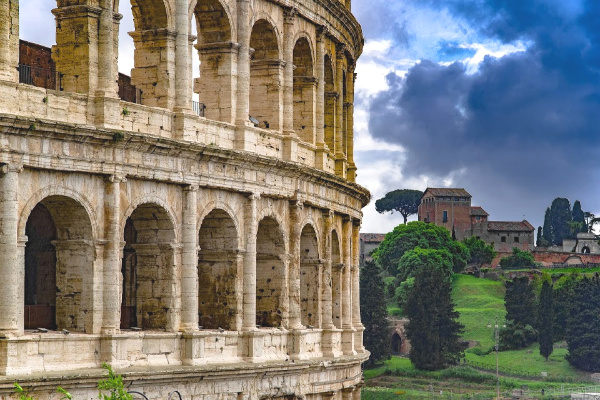
For two people, the average price of a hotel in France varies from between $84 a night to over $1000 per night for higher-end accommodation, with most mid-range hotels averaging about $244 per night.
Local transportation can range from between $10-$65 per day per person, averaging around $25 per day. Meals are about $33 per person per day on average, but can be as low as $13 or as high as $80.
In Italy, hotel prices for two people per night are about $142 on average, with budget hotels available for as low as $56 and more high-end accommodation for upwards of $320.

Local transportation can cost between $8-$57 per day per person, with mid-range travelers usually spending around $21 on average. Finally, daily meal costs in Italy usually come to around $36 — actually slightly more expensive than France — but can be as low as $15 or as high as $87 per person per day.
It’s worth noting that prices will differ depending on the region of each country you choose to travel in. Overall, larger cities like Paris or Rome will have much higher prices. (Budget and economy accommodation in Paris, for example, usually costs around 100 euros per night, whereas similar accommodation in the rest of France would usually come to around 70 euros per night).
Continues below
...continued
Highlights
Neither France nor Italy are lacking in beautiful landscapes, stunning architecture, and rich history. Here’s a few of the top attractions and destinations you can find in both countries.

France
1. Paris
The city of Paris and the surrounding regions are perhaps the most famous and iconic in France. Visit its many museums, including the Louvre, the Musee d’Art Moderne, and the Musee d’Orsay, for your arts and culture fix; gaze at the Eiffel Tower and the Arc de Triomphe in the city center; or wander for hours through Paris’ colorful and diverse neighborhoods, such as the artsy Montmartre or the literary Latin Quarter.
Not far to the east Paris lies the Palace of Versailles, opulent 17th-century hideaway of Louix XIV — perfect for a day trip spent exploring the palace’s many rooms and vibrant gardens.
2. Mont Blanc + Chamonix
For lovers of mountain landscapes, explore the highest point of the French Alps from cozy Chamonix, an alpine town at the base of Mont Blanc. There’s plenty of options for outdoor activities in all seasons, such as skiing, hiking, and rock climbing — and no shortage of historic buildings and tasty food to warm you up after a long day enjoying the beautiful mountain views.
3. Alsace
Located on the border of France and Germany, Alsace is a unique region full of picturesque, colorful villages and rolling vineyard-covered hills. Get a taste of this beautiful area by driving the 170 kilometer Alsace Wine Route and explore the canals, winding streets, and flower-lined old town neighborhoods of villages such as Colmar, Ribeauville, or Obernai.
4. Provence
Head to Provence for sunshine, clear blue skies, and rolling fields of sunflowers and lavender. Wander through the streets of Avignon or Aix-en-Provence, or explore the coast from Marseilles.
Thanks to the region’s usually cloudless views and clear light (caused by the “mistral,” a strong, cold, dry wind that blows from the north into the Mediterranean Sea), this area was a hotspot for the Impressionists of the 19th century — including none other than Vincent van Gogh himself, who lived in Arles and Saint-Remy-de-Provence during the 1880s.
5. Cote d’Azur
Finally, for lovers of stunning blue waters, rocky Mediterranean coastlines, and plenty of places to bask in the sun Cote d’Azur has all that — and more — in spades. Located in the southernmost reaches of the country near Provence, it’s a popular summertime holiday destination, but is equally beautiful (and slightly quieter) during the rest of the year.
Some of France’s most beautiful and well-known beachfront destinations are located along this coastline, including Nice, Cannes, Monaco, and the glittering St. Tropez.
Italy
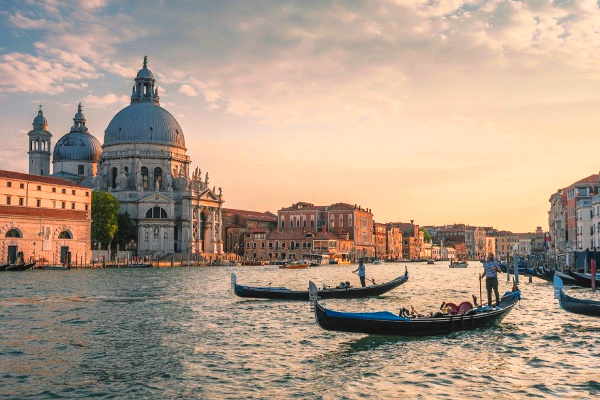
1. Rome
As Italy’s largest city, Rome has it all. Enjoy incredible food & nightlife as well as the rich history that the city has to offer — wander through the ancient Colosseum or the Roman Forums before heading to the Vatican to gaze up at the stunning Sistine Chapel, or simply roam through the streets in search of your next gelato or espresso.
2. Venice
What trip to Italy would be complete without a tour of Venice? This is a beautiful and enigmatic city — the perfect place to get lost for hours. Built on top of 118 small islands in a shallow lagoon, Venice is criss-crossed by its famous canals as well as over 400 bridges. Spend the day here touring through the Doge’s Palace or the Basilica of St. Mark, floating down a canal in a gondola, and discovering Venice’s many stunning hidden corridors.
Located in central Italy, Tuscany is known for its hilly landscape, picturesque towns, and delicious regional food and wine. You can explore ancient hilltop villages such as Cortona or Volterra easily by basing yourself in Florence, Tuscany’s regional capital.
Florence is regarded as the birthplace of the Italian Renaissance and is full to the brim with stunning Renaissance architecture and art — including the Catedral de Santa Maria del Fiore, or the Duomo.
The Duomo, completed in 1434, is one of the world’s most impressive pieces of architecture, and (if you’re willing to brave the 463 steps) offers breathtaking views of the city.
For outdoors-oriented travelers, the Dolomites are the place to go. Located a few hours north of Venice, this eastern side of the Italian Alps offers dramatic mountain views and plenty of comfortable chalet accommodations. Because of its location near Germany and France, this area is also incredibly diverse — perfect for hikers, skiers, and lovers of culture.
This one is for archaeology buffs and lovers of the island life. Located off the western coast of Italy in the Mediterranean Sea, Sardinia is chock-full of sunshine and beaches as well as hiking, climbing, and archaeological sites from both Roman and pre-Roman times.
Similarly, Sicily — an island located off the southern tip of the Italian peninsula — offers beautiful Mediterranean landscapes and also boasts seven different UNESCO World Heritage Sites, including Greek temples and well-preserved Roman villas.

Continues below
...continued
Summary: Italy or France - Which One Is For You?
Both France and Italy are incredible destinations for lovers of food, wine, history, and stunning landscapes.
In France, the climate overall will be slightly cooler than Italy, and wine, bread, and the country’s hundreds of different cheeses reign supreme. For those interested in haute cuisine, France is also the place to go.
For the outdoorsy traveler, the French Alps are perfect for incredible mountain views as well as some of the best skiing in the world. For those interested in art and fashion, Paris is a hub of modern culture, and regions such as Provence offer a rich history in the advent of Impressionism and modern art.
Italy’s sunshine, miles of coastline, and southern islands make it the perfect choice for those looking for a Mediterranean getaway, while the Italian Alps and the Apennines also offer options for hikers and skiers.
Italy has incredibly diverse food traditions, so for those looking to sample different regional cuisines, this is the place to go — enjoy the country’s many different cheese, pasta, fish, meat, and rice dishes that vary from North to South.
Finally, Italy’s rich history provides the perfect destination for travelers interested in archaeology, ancient history, and Renaissance art & architecture alike.
Connect & Share
"Italy vs France: Which Travel Destination is Right For You?"
